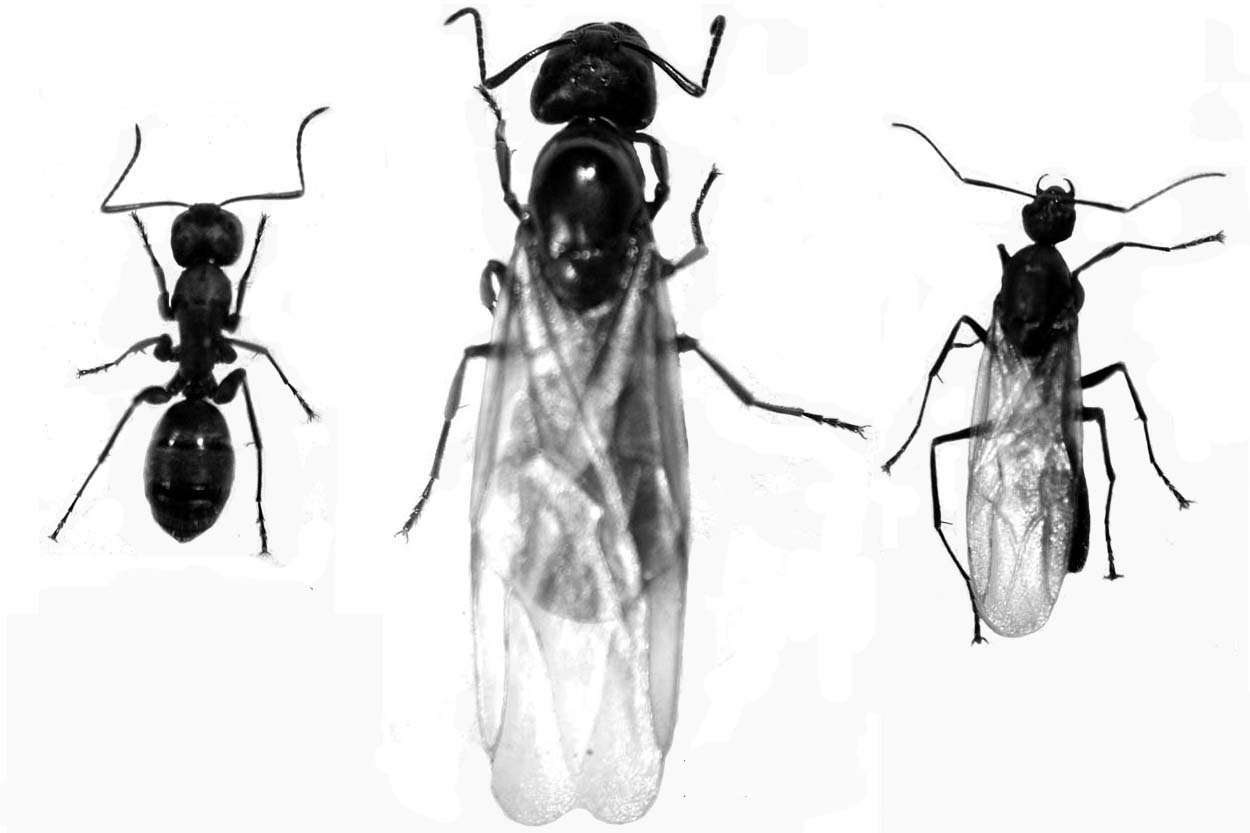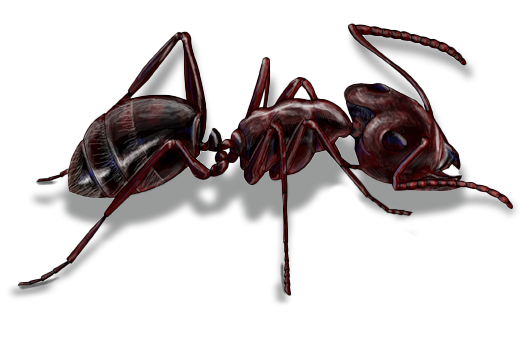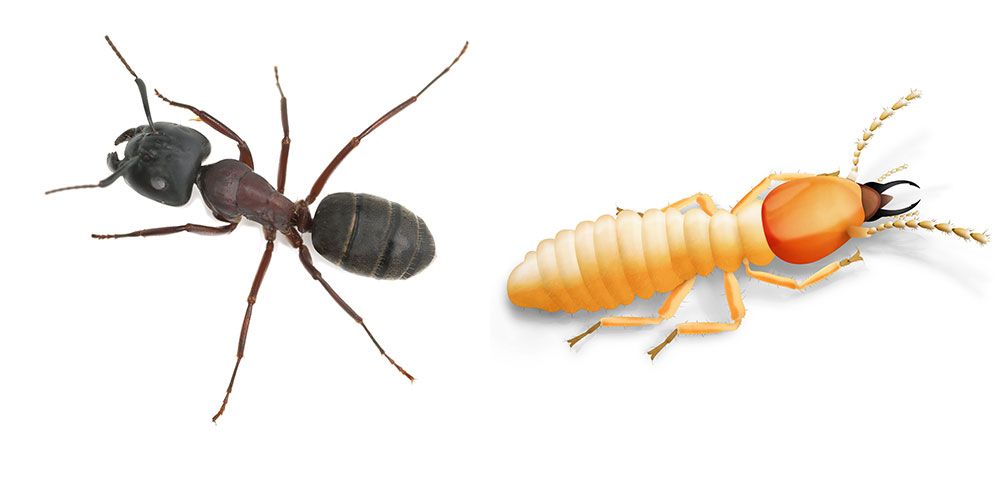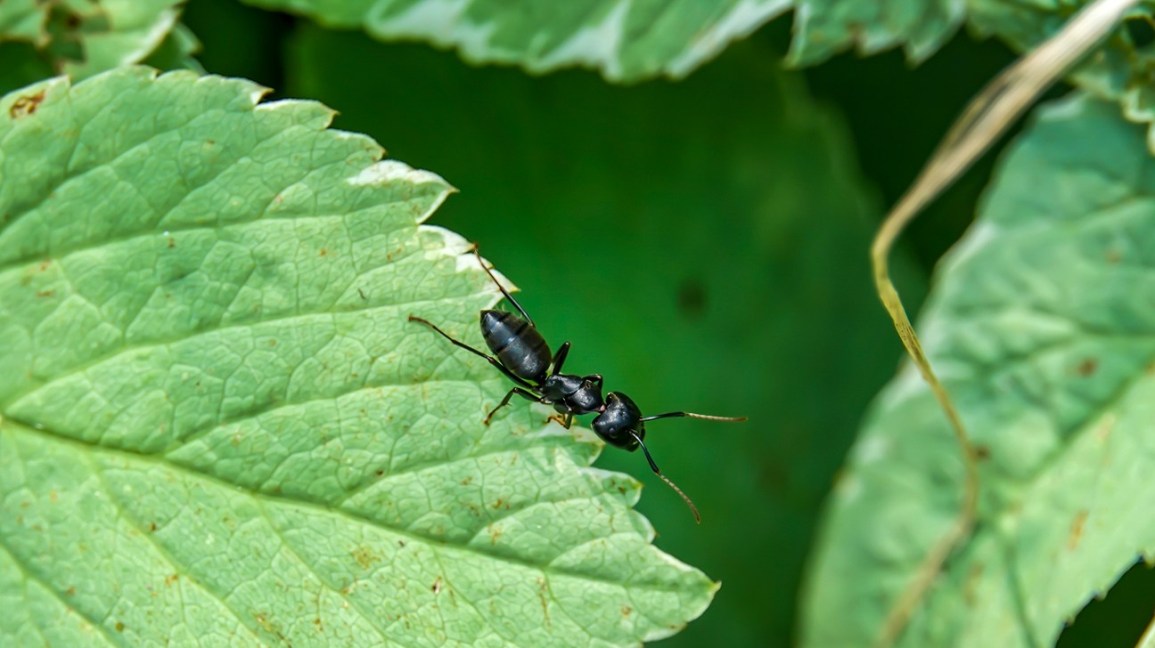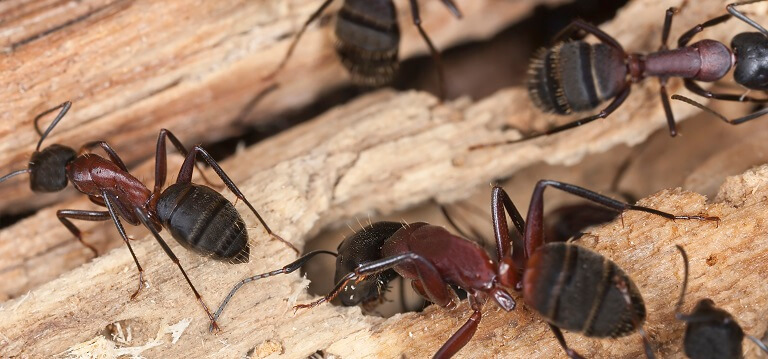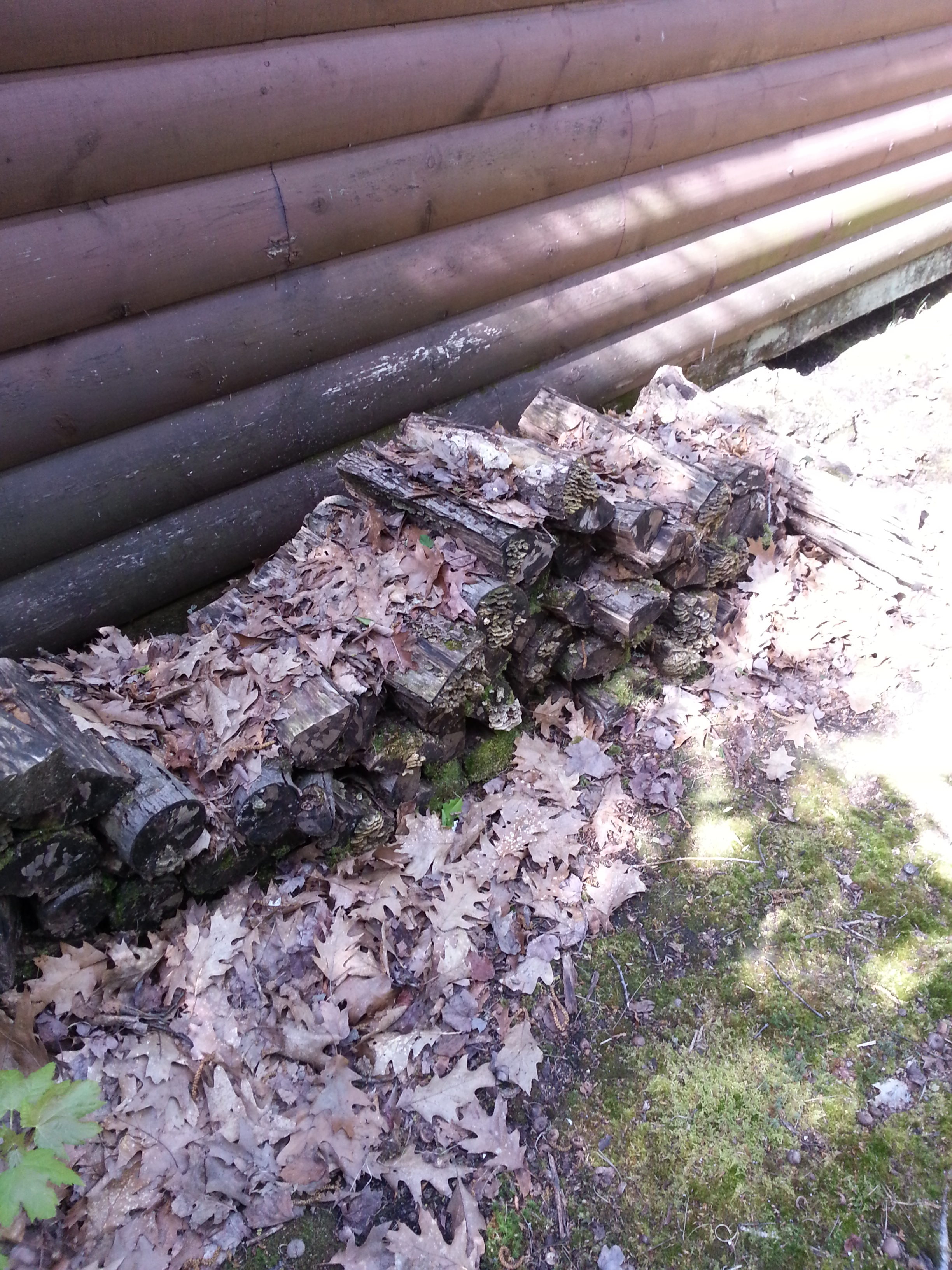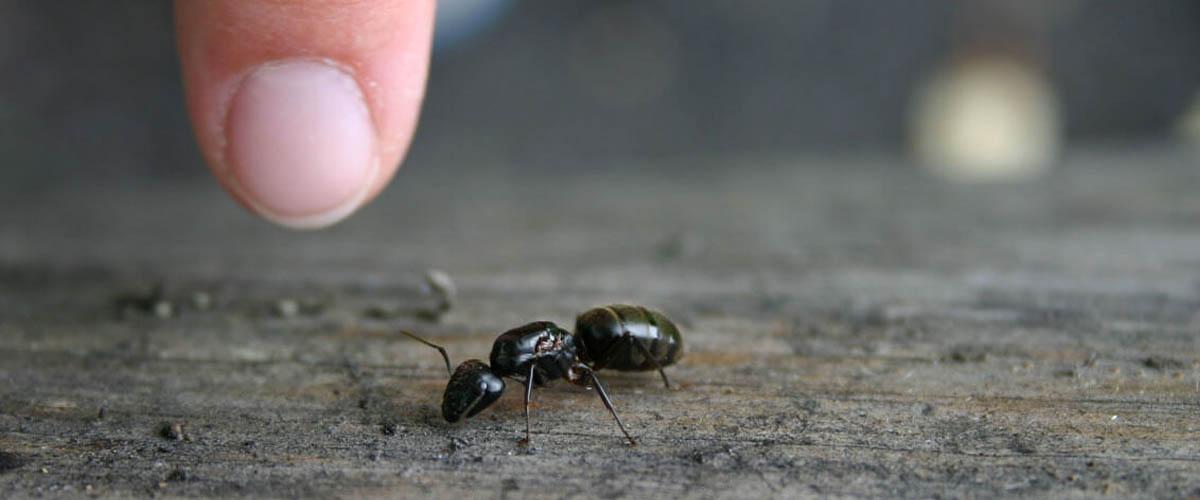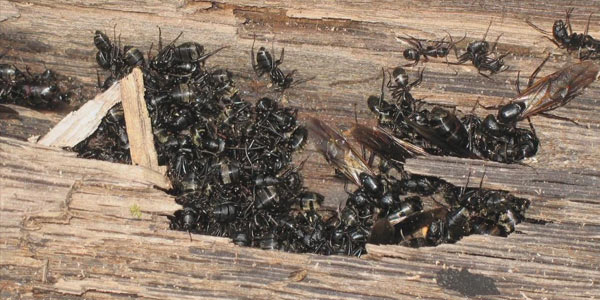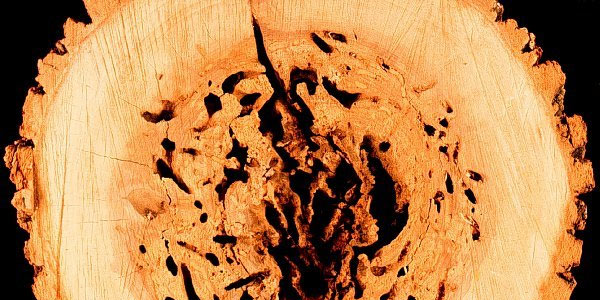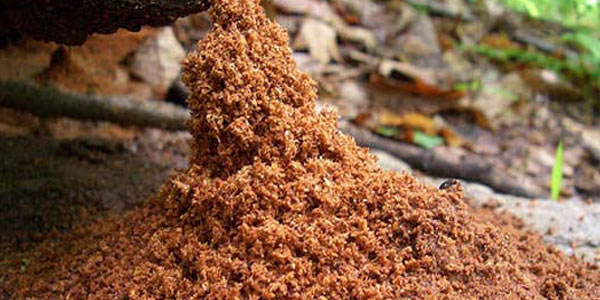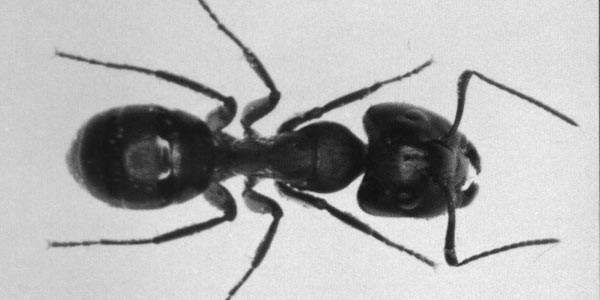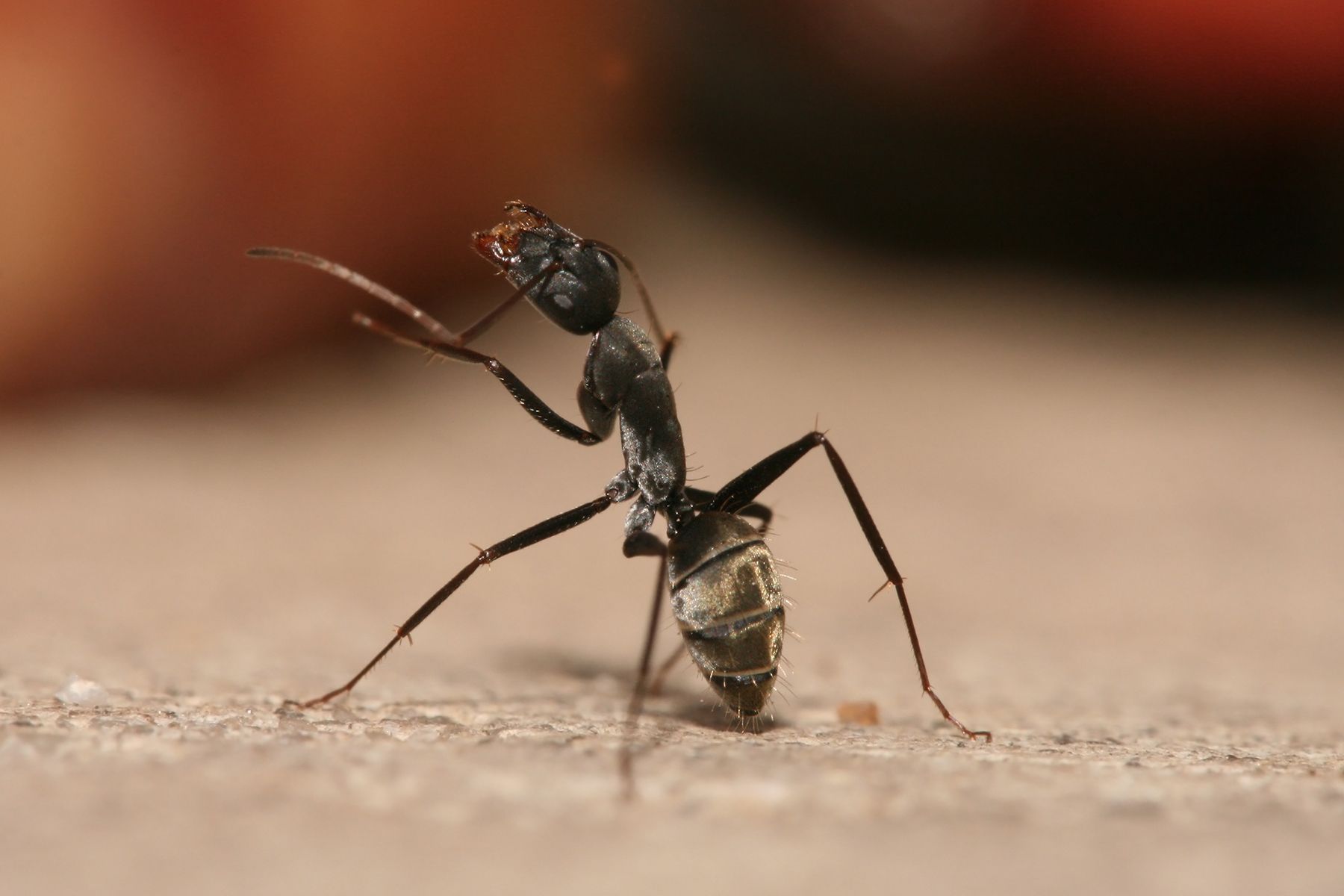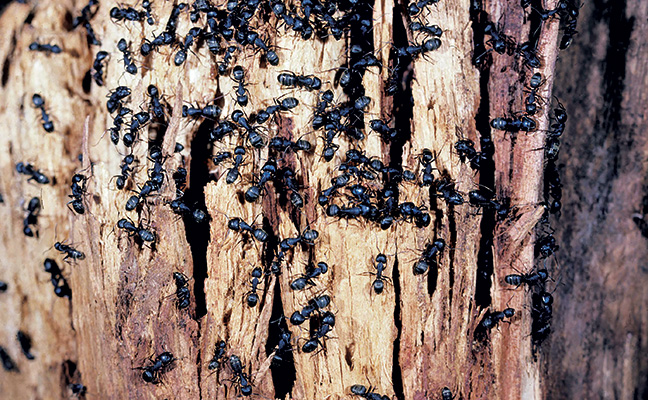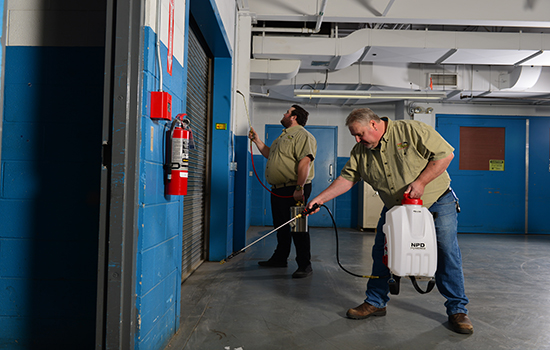Check Out More Videos Below!!
Carpenter Ants are among the largest ants in Muskoka. There are several species of carpenter ants that may be found infesting homes and other buildings. Normally workers are black or re and black in color and range in size from 3/8 to 1/2 inch. Winged queen ants may be as large as one inch. Size is not a reliable characteristic to identify carpenter ants. There are other ants that appear similar and are occasionally mistaken for carpenter ants. They may have one or two nodes. However, they can be distinguished from carpenter ants by the uneven profile of their thorax. These ants are usually not wood-infesting, so it is important to correctly identify the ants before control is attempted as control strategies vary with different ant species.
Ants are divided into different castes, i.e. workers, queens, and males (figure 1). Some ants, including carpenter ants, have polymorphic workers, which mean that within one species the workers occur in different sizes. The best method to separate carpenter ants from other ants is by the following characteristics: 1) a waist with one node (petiole) and 2) a thorax with an evenly rounded upper surface (figure 2). Carpenter ant castes, from left to right: queen, winged male, major worker, minor worker (Figure 1).


